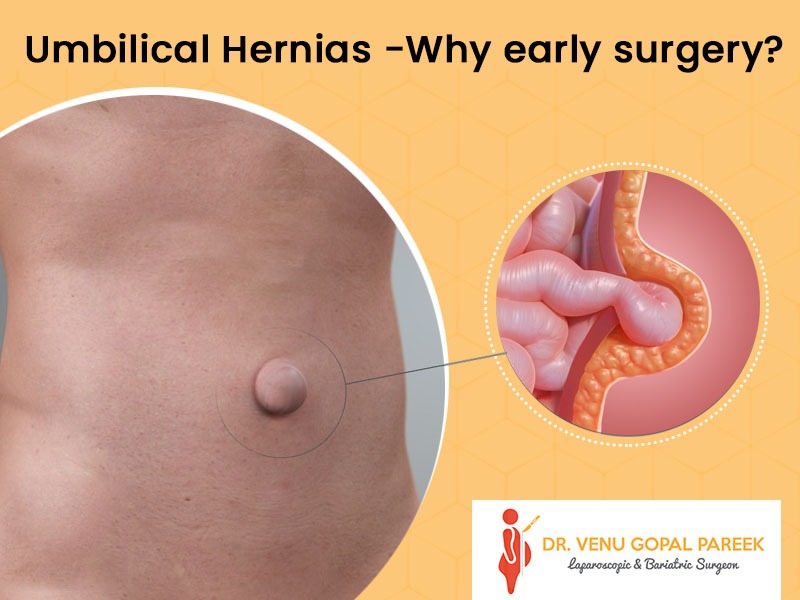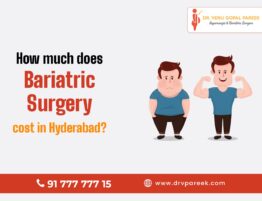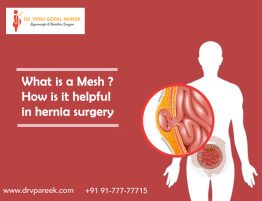
One of the first things parents look forward to is for the belly button to heal. After a week or two of careful treatment, the umbilical cord dries and falls off without infection, leaving the umbilicus open. The belly button is a concern if it looks enlarged.
While the baby is in the womb, the abdominal muscles close just below the navel, forming an umbilical ring. Sometimes the muscles are not fully united, and small holes remain. After birth, the intestines get pushed through the opening, resulting in an umbilical hernia. The hernia must be repaired before the child goes to school.
An umbilical hernia is a protrusion from the navel or umbilicus. Sometimes referred to as an “outlet,” a hernia can contain abdominal contents such as fat or intestines. About 80% of umbilical hernias close on their own by the time a child is two years old. Sometimes large or extensive umbilical hernias do not close on their own and need to be repaired before the child is two years old or earlier if symptoms appear.
In contrast to inguinal hernias, umbilical hernias do not pose a high risk of occlusion (bowel blockage in this space) and can be repaired before the child goes to school. There may be a pain in the area and vomiting. If your child’s gentle pressure while sleeping doesn’t relieve it, contact Dr Venu Gopal Pareek immediately.
This article provided by Dr Venu Gopal Pareek gives information about Umbilical Hernias and surgery, and Why Early Surgery is better?
Causes for Umbilical Hernia and Why Early Surgery?

Umbilical hernias occur most often in women during and after pregnancy and in people who are overweight.
An umbilical hernia itself is not dangerous, but there is a risk of being incarcerated. This can interfere with the blood supply to the hernia contents and lead to life-threatening conditions such as gangrene or peritonitis (in which case the hernia is called strangulated). If left untreated, your hernia will likely get bigger and become more uncomfortable. In most cases, surgery to repair the hernia is recommended.
Symptoms:

An umbilical hernia creates a tender swelling or bulge near the navel. In babies with an umbilical hernia, the bulge may only be visible when they cry, cough, or exert exertion.
Umbilical hernias in children are usually painless. Umbilical hernias that occur in adulthood can cause abdominal discomfort.
Reason:
During pregnancy, the umbilical cord passes through a small hole in the baby’s abdominal muscles. The opening usually closes shortly after birth. If the muscles in the midline of the abdominal wall are not fully connected, umbilical hernias can occur at birth or later.
In adults, it is due to too much abdominal pressure that contributes to umbilical hernias. The causes of increased stomach pressure are:
- Obesity
- Multiple pregnancies
- Fluid in the abdominal cavity
- Previous abdominal surgery
Long-term peritoneal dialysis to treat kidney failure
When to see a doctor:
If you suspect your baby may have an umbilical hernia, talk to your baby’s doctor. Seek emergency help if your baby has an umbilical hernia and:
- It looks like it hurts
- Vomiting
- If the location of the hernia is tender, swollen.
- Change of colour
Similar guidelines apply to adults. Talk to your doctor if you have swelling near your belly button. Seek emergency help if the swelling becomes painful or tender. Early diagnosis and treatment can help prevent complications.
Diagnosis:

Your doctor will examine your abdomen. The umbilical cord is usually visible when you have an umbilical hernia. Umbilical hernias can cause serious illness if left untreated in adults. The risk of disease increases with the size of the hernia. Your doctor will usually recommend umbilical hernia repair.
Why does your doctor recommend early surgery?
Most umbilical hernias can be treated on their own, but your doctor may recommend surgery if:
- Your child’s hernia is very large—a hernia which is 2 cm or less is likely to close on its own.
- Hernias begin after six months of age or become much larger after the 1st to 2nd year of life.
- Your child has pain, gas, or other signs of a rare but basic problem called a strangulated hernia. This can occur when the intestine enters the hernia sac and loses its blood supply.
- Hernias don’t close when your child is five years old. If the hernia hasn’t closed on its own at this age, it’s most likely not.
- Some umbilical hernias have additional skin flaps. This hernia looks strange and is more visible than other types of umbilical hernia.
About the surgery:

Hernia repair surgery aims to push the contents of the bulge back into the abdomen and strengthen the abdominal wall. There are two main types of hernia repair surgery: open and keyhole surgery. In most cases, surgery is an open repair that involves making a small incision just below the belly button. Sometimes if the hernia recurs, keyhole surgery is recommended.
Open operation:
A single incision (5 to 10 cm long) is made just below your abdomen .The intestinal contents are reduced. Your surgeon can sew synthetic mesh at the weak points to strengthen the abdominal wall. The skin incision is closed with stitches and closed with a bandage.
Keyhole operation:
Two or three small incisions (1 long) are made in the lower abdomen. Your surgeon will install a tubular telescopic camera to view the hernia by looking at the monitor’s images. The hernia is repaired with the help of specially designed surgical instruments through the remainder of the incision. The synthetic mesh can be used to strengthen the abdominal wall. The skin incision is closed with stitches.
The process takes 30 to 45 minutes, depending on the method used.
Conclusion
If you have specific questions about your child’s umbilical hernia surgery, discuss it with Dr Venu Gopal Pareek. Contact us at 091777 77715.







